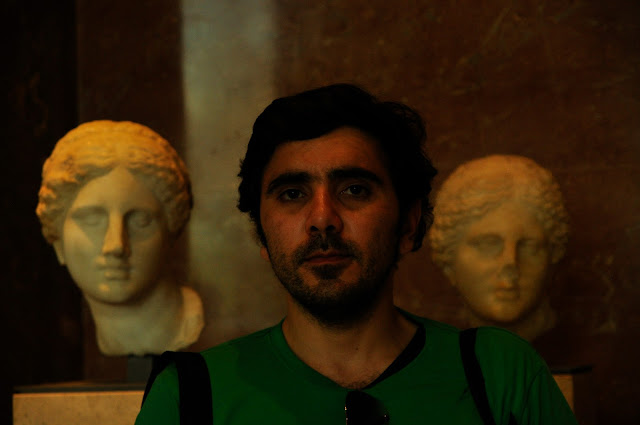The Istanbul Archaeological museums consist of three
buildings with three museums – Archaeological Museum, Ancient Orient Museum,
Tiled Kiosk Museum. The former two were built in 1891. The tiled kiosk however
dates back to 1473. Here are a seven items in Archaeological Museum and Ancient
Orient Museum of Istanbul to look out for:
1. Treaty of Kadesh - It is the oldest peace treaty dating
to 13th century BC a copy of which hangs at the UN headquarters. The
treaty was agreed upon between Egyptian and the Hittite dynasty after the
battle of Kadesh known to be the biggest wars of
2. Lions of Ishtar Gate - The Istanbul Archaeology Museum
houses lions, bulls and dragons from the Ishtar gate of Babylon dedicated to
Goddess of Ishtar. It was the 9th gate in the ancient city of Babylon constructed
in about 575 BC by order of King Nebuchadnezzar II. Through the gate ran the
Processional Way which was 180 m long and on each side were placed 60 lions
each made of glazed bricks. Some of these lions are now in the museum of
Istanbul. But most of them are in Berlin where the Ishtar gate has been
reconstructed in the
Pergamon
museum.
 |
| The Lions of Ishtar gate |
3. Oldest Love Poem - 8th Century BC inscription on a tablet
from the ancient Babylonian times. The king was required to marry a priestess
every year for the fertility of soil and women. The poem is said to have been
written by a bride for the king. Shuu Sinn.
 |
| A cuneiform Tablet |
Here is the translation of the poem from Istanbul
Archaeological Museum:
“Bridegroom, dear to my heart,
Goodly is your beauty, honeysweet,
Lion, dear to my heart,
Goodly is your beauty, honeysweet.
.....................
Bridegroom, let me caress you,
My precious caress is more savory than honey,
In the bedchamber, honey-filled,
Let me enjoy your goodly beauty,
Lion, let me caress you,
My precious caress is more savory than honey.
Bridegroom, you have taken your pleasure of me,
Tell my mother, she will give you delicacies,
My father, he will give you gifts.
.....................
You, because you love me,
Give me pray of your caresses,
My lord god, my lord protector,
My SHU-SIN, who gladdens ENLIL's heart,
Give my pray of your caresses”
4. Code of Hammurabi – Hammurabi’s code dating back to 1772
BC is one of the first written codes of law in history. Hammurabi was 6th king
of the 11 kings of an old Babylonian dynasty. He is known for having produced
the first ever written code of law. The complete code of Hammurabi with 282
laws is inscribed on 2.25 meters long stele now in Louvre museum. However, the
Istanbul museum houses a smaller tablet used in schools and offices dating to
1750 BC.
5. Gezer Calendar - The Gezer calendar is a 10th century BCE
inscribed limestone tablet discovered in excavations of the ancient Canaanite
city of Gezer, west of Jerusalem, Israel. It is one of the earliest calendars
and one of the oldest examples of Hebrew writings.
6. Sarcophagus of Alexander - The Alexander Sarcophagus is
one of four massive carved sarcophagi that were discovered during the
excavations at the necropolis, Lebanon in 1887. Though it is called the Alexander Sarcophagus,
in fact, it does not belong to Alexander the Great. It is thought to be the
sarcophagus of Abdalonymus, the king of Sidon. Another Sarcophagus of
crying woman with 18 women mourning belongs to the 4th century BC.
 |
| Sarcophagus of Alexander - Not his sarcophagus, though |
7. The bust of Alexander the great – The head of the
Alexander dated 2nd century BC excavated close to Pergamon is
displayed.
 |
| Head of Alexander dated 2nd century BC |
If you have indeed reached the end of the post, I will also
suggest three displays that I enjoyed a lot:
- ·
Archives of Cuneiform documents: Tablet Archive
containing 75,000 cuneiform documents is housed in the museum. Cuneiform is one
of oldest forms of writing developed around 30th century BC. This is
where you find the oldest love poem and the code of Hammurabi
- ·
Royal Necropolis of Sidon – This room houses a
collection of Sarcophagus excavated at Sidon in Lebanon. Here are displayed the
Alexander Sarcophagus, the Lycian tomb and the Sarcophagus of the Crying Women.
- ·
Istanbul through the ages – After visiting Hagia
Sophia you tend to wonder what Istanbul was like in Byzantine times. This
display gives you a window into Constantinople of the Byzantine empire.




















































